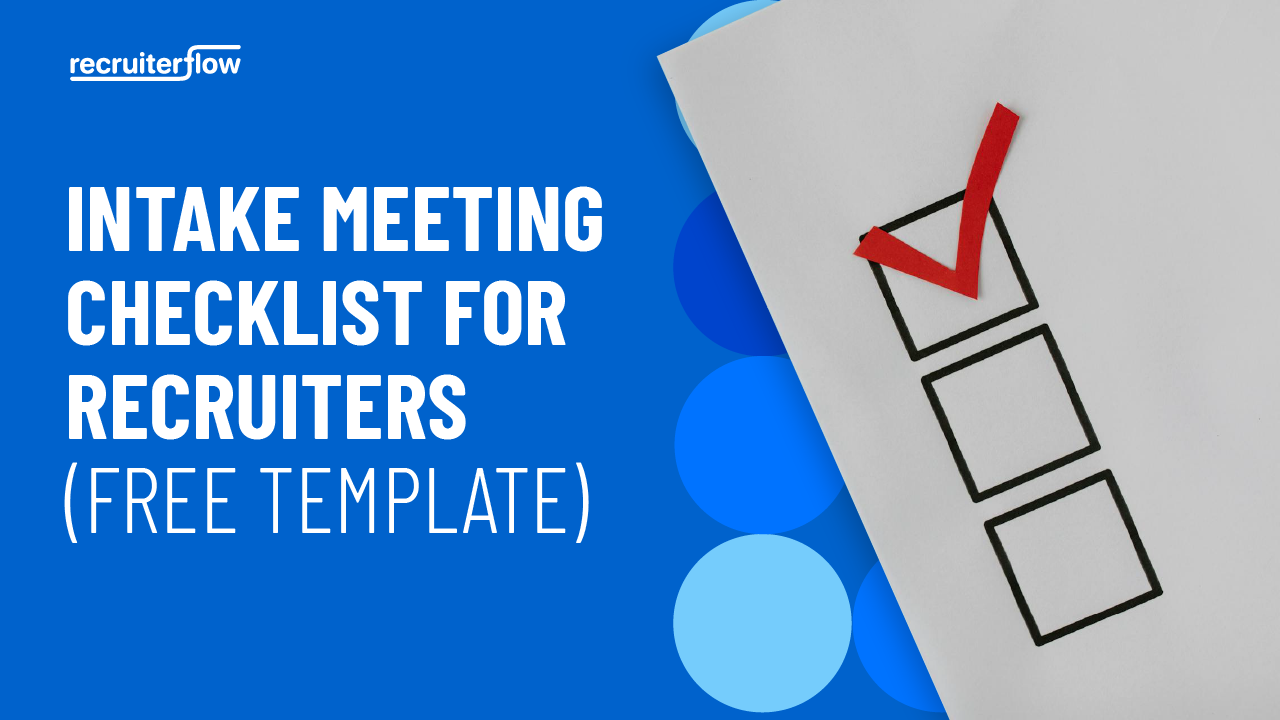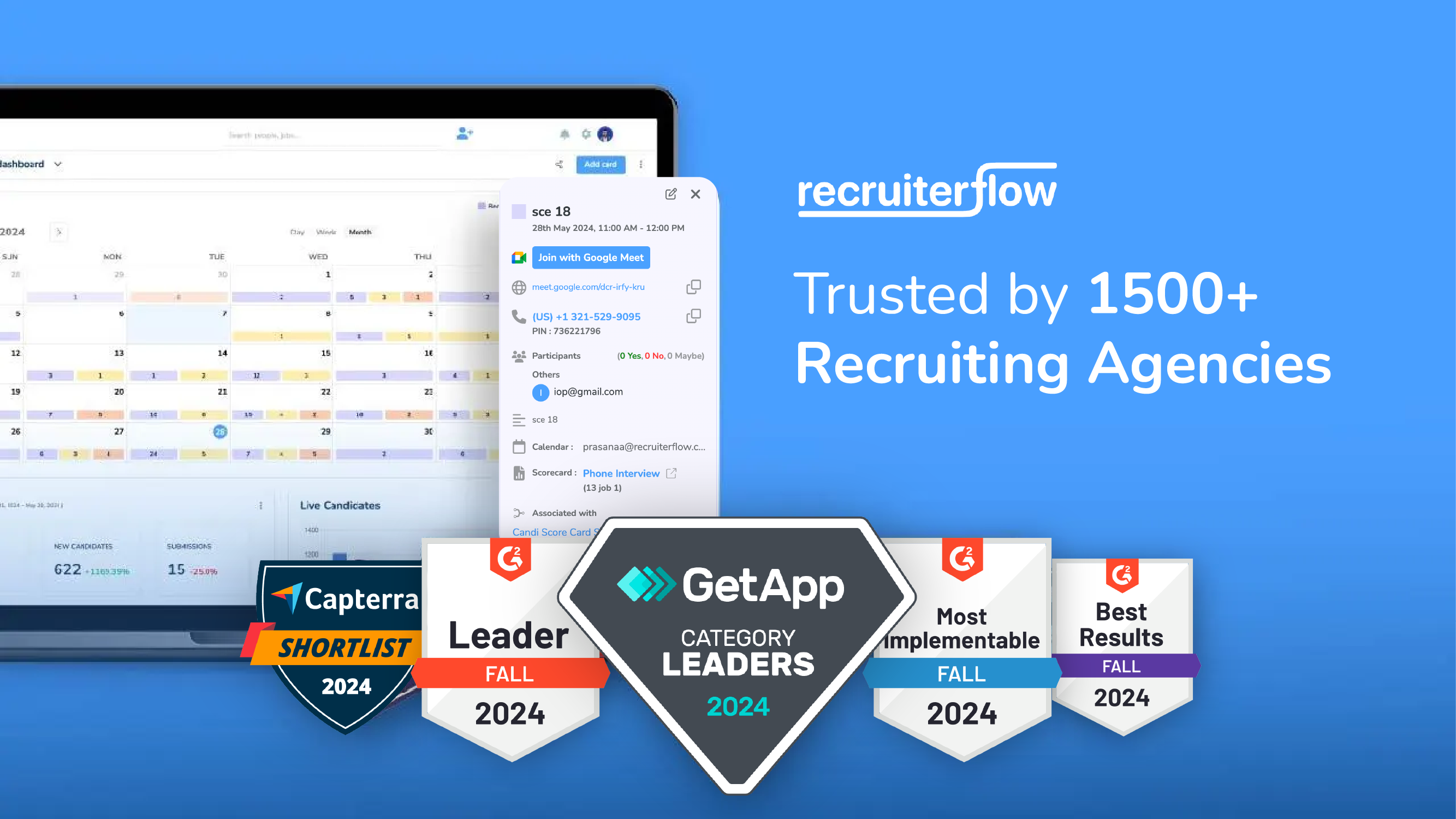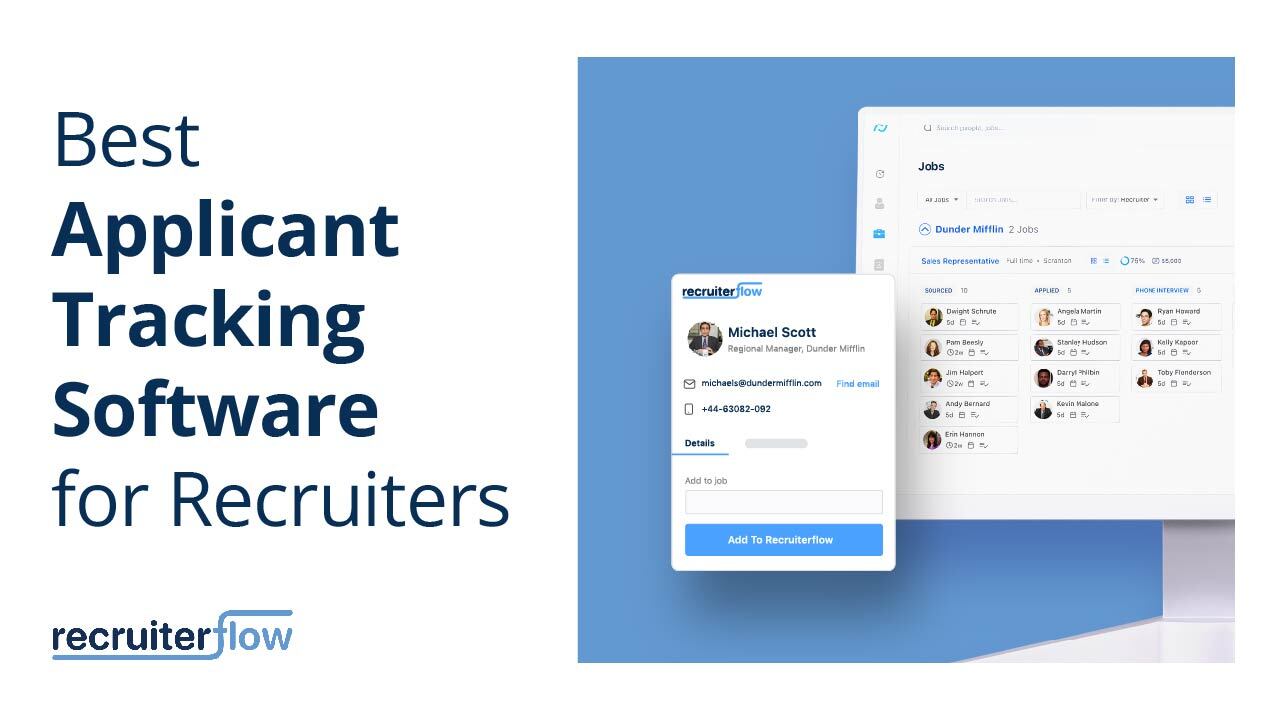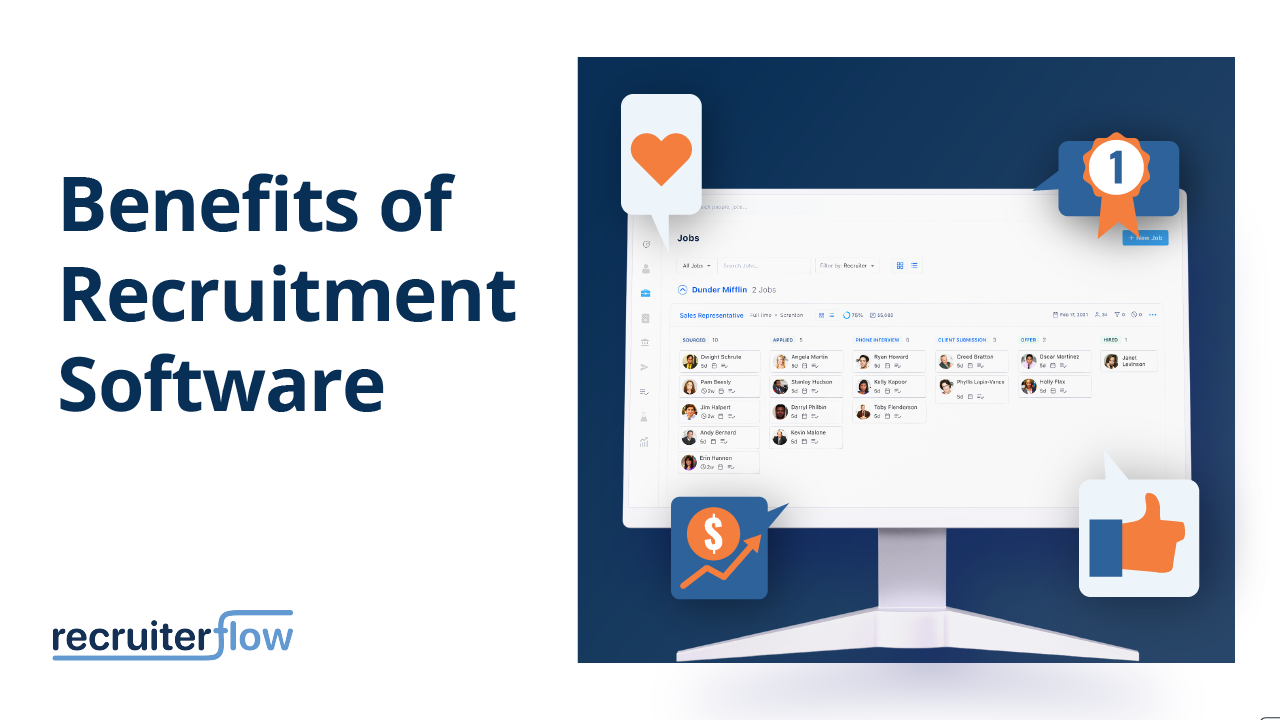
Recruitment Marketing in 2025: The Complete Guide

In 2025, Recruitment is no longer just about placements — it’s about influence, positioning, and long-term value. As the industry evolves, agencies that embrace recruitment marketing are rising to the top.
They’re not just matching resumes with roles; they’re building talent pipelines, enhancing employer brands, and guiding clients through a complex hiring landscape.
In this guide, you’ll learn what recruitment marketing is, why it’s a must-have for modern agencies, and how to use it to attract, engage, and hire top talent.
What Is Recruitment Marketing?
At its core, recruitment marketing involves promoting your company as an employer of choice. This means showcasing your mission, culture, and values in ways that resonate with potential candidates.
It’s proactive rather than reactive—aimed at building a talent pipeline for future hiring needs, not just filling immediate vacancies.
It uses tools like:
- Social media campaigns to highlight your workplace culture.
- Content creation, such as blogs or videos featuring employee testimonials.
- Career events to connect with early-career talent.
- SEO and job boards to ensure your job postings are visible online
You can also check out our guide on the best recruitment marketing tools.
Key Components of High-Performance Recruitment Marketing
Recruitment marketing is all about showcasing your company as the ultimate place to work while engaging candidates at every step of their journey. Here are the essential building blocks:
1. Employer Brand Management
Think of this as your agency’s personality. It’s about communicating your mission, values, and culture to make your organization irresistible to potential candidates. A strong employer brand sets the tone for everything else you do in recruitment marketing.
2. Content Marketing
Stories sell! Use blog posts, videos, podcasts, and social media updates to showcase your company culture and employee experiences. Think behind-the-scenes videos or day-in-the-life stories that humanize your brand and build trust.
3. Social Media Marketing
Social media isn’t just for promoting job openings—it’s a tool for storytelling. Share posts about company events, industry news, or even fun team moments. Platforms like LinkedIn, Instagram, and TikTok are goldmines for connecting with different candidate demographics.
4. Search Engine Optimization (SEO) & Advertising
Make sure job seekers can find you! Optimize job postings and career pages for search engines and invest in targeted ads to reach specific audiences. This ensures you’re visible where candidates are searching.
You can also check out our blog on SEO for Recruitment Agencies.
5. Candidate Relationship Management (CRM)
Building a talent pipeline is crucial for long-term success. Use tools like email campaigns or email newsletters to stay connected with potential candidates, even when you’re not actively hiring.
6. Employee Advocacy
Employee advocacy, your employees are your best ambassadors! Encourage them to share their experiences on social media or review platforms like Glassdoor. Authentic stories from employees build credibility and trust with potential hires.
Traditional Recruiting vs Recruitment Marketing
Traditional recruiting and recruitment marketing represent two distinct approaches to talent acquisition. While traditional recruiting focuses on filling immediate vacancies, recruitment marketing takes a proactive approach to engage potential candidates even before roles open.
| Aspect | Traditional Recruiting | Recruitment Marketing |
| Objective | Fill immediate openings | Build a pipeline of potential candidates |
| Target Audience | Active job seekers | Passive and active candidates |
| Primary Tools | Job boards, job fairs, headhunting | Digital campaigns, employer branding, storytelling |
| Engagement Style | Reactive | Proactive |
| Focus | Short-term hiring needs | Long-term talent attraction |
| Strategy | Transactional | Relationship-driven |
Traditional recruiting is ideal for urgent hiring needs, but may struggle to attract passive talent. Recruitment marketing helps companies stand out by showcasing their culture and values, building long-term relationships with potential hires.
You can also check out our blog on recruitment marketing ideas.
Recruitment Marketing vs Employer Branding
Recruitment marketing and employer branding are closely related but serve different purposes within the hiring process. Employer branding focuses on shaping the perception of the company as an attractive workplace, while recruitment marketing translates this perception into actionable campaigns to attract candidates.
| Aspect | Recruitment Marketing | Employer Branding |
| Objective | Attract candidates to apply for specific roles | Build a long-term reputation as an employer |
| Focus Area | External communication about job openings | Internal and external perception of the workplace |
| Timeframe | Short-term (campaign-based) | Long-term (strategic reputation building) |
| Tools Used | Job ads, social media promotions, outreach programs | Employee testimonials, company culture content |
| Primary Goal | Drive applications | Enhance employee loyalty and attract top talent |
Employer branding lays the foundation for recruitment marketing by establishing trust and credibility. Recruitment marketing amplifies the employer brand through targeted campaigns focused on immediate hiring needs.
Why Recruitment Marketing is Important
Recruitment marketing has become a cornerstone of modern talent acquisition strategies, helping organizations thrive in a competitive job market.
Here’s why it matters and how it can transform hiring outcomes:
1. Attract Top Talent in a Competitive Market
The global recruitment marketing market is projected to grow from $1.2 billion in 2024 to $1.7 billion by 2030, reflecting its rising importance.
With 77% of HR professionals reporting difficulties in filling full-time positions, recruitment marketing offers a proactive approach to attract high-quality candidates.
Agencies can stand out and appeal to talent by leveraging targeted campaigns and showcasing employer branding.
2. Enhance Employer Branding
Employer branding plays a critical role in recruitment marketing. Candidates are 15 times more likely to choose you if they know your employees have certified it as a great place to work.
Recruitment marketing helps organizations build and communicate their unique value propositions—such as company culture, mission, and benefits—through platforms like social media, job boards, and company websites.
This ensures companies remain top-of-mind for prospective employees.
3. Reach Passive Job Seekers
A staggering 70% of professionals are passive job seekers who aren’t actively searching for new roles but can be persuaded through compelling campaigns.
Recruitment marketing uses tools like LinkedIn updates, engaging content, and employer branding to capture the attention of these individuals.
4. Improve Hiring Efficiency
Effective recruitment marketing reduces time-to-hire and cost-per-hire by targeting ideal candidates early in the process.
Data-driven strategies allow companies to optimize their recruitment spend by focusing on channels that yield high-quality applicants.
5. Adapt to Changing Candidate Expectations
Today’s candidates act like consumers—they research potential employers as thoroughly as they would a major purchase.
Factors like flexible work arrangements, diversity initiatives, and professional growth opportunities have become key decision-making criteria. Social impact and corporate responsibility are also rising priorities, especially among Millennials and Gen Z. Highlighting partnerships with companies that donate to nonprofits can further reinforce your brand’s values and appeal to socially conscious talent.
Recruitment marketing ensures these aspects are highlighted to align with evolving expectations.
6. Leverage Technology and Analytics
Advancements in recruitment technology, such as applicant tracking systems (ATS) and recruitment marketing platforms, enable organizations to streamline processes and measure campaign effectiveness. Metrics like source of hire and conversion rates provide insights for continuous improvement.
Also read: Top Recruitment Trends that are Shaping 2025
Recruitment Marketing Myths
Recruitment marketing is a critical yet often misunderstood aspect of talent acquisition. It’s surrounded by myths that can misguide recruiters, hiring managers, and even job seekers.
These misconceptions can lead to wasted resources, missed opportunities, and unrealistic expectations.
Let’s explore and debunk some of the most prevalent myths about recruitment marketing to help you better understand its true potential.
Myth 1: Recruitment Marketing and Employer Branding Are the Same
One of the most common misconceptions is equating recruitment marketing with employer branding. While they are closely related, they serve different purposes:
- Employer branding is about defining your company’s identity as a workplace. It focuses on values, culture, and reputation.
- Recruitment marketing promotes that identity to attract candidates. It involves strategies like targeted advertising, social media campaigns, and content creation.
Think of employer branding as the “what” and recruitment marketing as the “how.” For example, companies like Albert Heijn have used strategic recruitment marketing to triple their weekly hires by showcasing their strong employer brand through targeted campaigns.
Myth 2: Recruitment Marketing Is Too Expensive
Many companies hesitate to invest in recruitment marketing because they assume it’s prohibitively costly. However, this myth overlooks the long-term benefits:
- Strategic recruitment marketing reduces cost-per-hire and time-to-hire.
- It improves candidate quality by targeting the right talent pools.
For instance, textile retailer Zeeman transitioned to a sustainable recruitment marketing strategy that saved costs by focusing on long-term hires rather than expensive short-term solutions. The key is to view recruitment marketing as an investment rather than an expense.
Myth 3: Only Active Job Seekers Are Worth Targeting
Another myth is that recruitment efforts should focus solely on active job seekers. In reality, passive candidates—those who are not actively looking but are open to opportunities—can be a goldmine for top talent:
- Passive candidates are often highly skilled and experienced.
- Engaging them requires proactive strategies like networking on LinkedIn or leveraging employee referrals.
Building relationships with passive candidates may take more time, but it leads to long-term hires who bring immense value to your organization.
Myth 4: Posting Job Ads Is Enough
Some believe that posting job ads is all it takes for effective recruitment. While job ads are essential, they are just one piece of the puzzle:
- Effective recruitment involves multiple channels like employee referrals, social media platforms, and professional networks.
- Job ads mainly attract active job seekers but often miss out on passive candidates.
Recruiters must adopt a multi-channel approach to connect with candidates where they are active and find the best fit for their roles.
Myth 5: Recruitment Marketing Is Only for Big Companies
Small businesses often assume they don’t need recruitment marketing or can’t afford it. The truth is:
- Recruitment marketing is scalable. Even small businesses can use affordable tools like social media and email campaigns.
- A strong employer brand can help smaller companies compete with larger organizations for top talent.
By leveraging creative strategies and digital tools, small businesses can effectively attract high-quality candidates without breaking the bank.
Myth 6: Employer Branding Is Only Relevant During Hiring Periods
Another misconception is that employer branding efforts should only occur when actively hiring. In reality:
- Employer branding is an ongoing process that builds a pipeline of engaged candidates.
- Consistently communicating your company’s values reduces time-to-hire when positions open up.
A strong employer brand ensures you’re always prepared to attract top talent, even during slower hiring periods.
Myth 7: Recruitment Marketing Guarantees Immediate Results
Some expect instant results from recruitment marketing efforts. However:
- Recruitment marketing focuses on building relationships and nurturing talent over time.
- Immediate results are rare; it’s about creating a sustainable pipeline of qualified candidates.
Patience is key. The long-term benefits include higher-quality hires and reduced turnover rates.
Myth 8: Recruitment Marketing Is Just About Technology
While technology plays a significant role in modern recruitment marketing (e.g., AI-driven tools for targeting), human insight remains irreplaceable:
- Personalization is key to connecting with candidates on an emotional level.
- Technology should enhance—not replace—the human touch in recruitment efforts.
Balancing tech-driven efficiency with human empathy leads to more successful outcomes.
Also check out this guide on 10 next-level marketing strategies for recruitment agencies.
Recruitment Marketing Funnel: Stages & Strategies
The recruitment marketing funnel is a structured framework that guides candidates through the hiring journey, from initial awareness of a company to becoming a hired employee.
It mirrors the traditional sales funnel and focuses on attracting, engaging, and converting potential candidates into employees.
Below, we’ll break down each stage of the funnel, discuss strategies to maximize its effectiveness, and highlight key metrics to track at every step.
Here are the stages of a recruitment marketing funnel:
- Awareness
- Attraction/Consideration
- Interest/Engagement
- Application
- Evaluation
- Interviewing
- Hiring
Each stage plays a unique role in narrowing down a broad pool of potential candidates into the best-fit hires.
Stage 1: Awareness
Goal
Build employer brand awareness and attract the attention of potential candidates.
Strategies
- Develop a strong employer brand by showcasing company culture, values, and benefits through social media, career pages, and employee testimonials.
- Utilize content marketing (e.g., blogs, videos, infographics) to highlight your organization’s unique selling points.
- Leverage job boards, career fairs, and targeted ads to reach passive and active job seekers.
Metrics to Track
- Impressions: Number of people exposed to your job postings or employer branding content.
- Website Traffic: Visits to your career page or blog.
- Social Media Engagement: Likes, shares, and comments on recruitment-related posts.
Stage 2: Attraction/Consideration
Goal
Engage candidates who show interest in your organization.
Strategies
- Create personalized content that speaks directly to your target audience (e.g., tech professionals or recent graduates).
- Use email campaigns or newsletters to nurture relationships with potential candidates.
- Host webinars or Q&A sessions with current employees to give candidates insights into your workplace culture.
Metrics to Track
- Click-Through Rate (CTR): Percentage of people clicking on job ads or email links.
- Time on Page: How long visitors engage with your career site or specific job postings.
- Talent Pool Growth: An Increase in the number of candidates joining your database or CRM.
Stage 3: Interest/Engagement
Goal
Convert interested candidates into active applicants.
Strategies
- Simplify the application process by optimizing forms for mobile devices and minimizing required fields.
- Provide clear job descriptions that outline responsibilities, qualifications, and benefits.
- Use chatbots or live chat tools to answer candidate questions in real time.
Metrics to Track
- Conversion Rate: Percentage of engaged candidates who start an application.
- Bounce Rate: Percentage of users leaving your career page without taking action.
- Application Drop-Off Rate: Number of candidates abandoning the application midway.
Stage 4: Application
Goal
Encourage candidates to complete their applications.
Strategies
- Offer transparency by sharing timelines for the hiring process and next steps.
- Use applicant tracking systems (ATS) to streamline application submissions and updates.
- Provide feedback or acknowledgment for every application received.
Metrics to Track
- Number of Applications Submitted: Total applications received per role.
- Application Completion Rate: Percentage of started applications that are completed.
- Source of Applications: Channels driving the most applications (e.g., referrals, LinkedIn).
Stage 5: Evaluation
Goal
Screen and assess applicants for fit and qualifications.
Strategies
- Implement pre-screening tools like skills assessments or personality tests.
- Use AI-driven resume parsing tools to filter applications efficiently.
- Conduct structured interviews based on predefined criteria.
Metrics to Track
- Time-to-Screen: Average time taken to evaluate an applicant after submission.
- Candidate Quality Ratio: Percentage of applicants meeting baseline qualifications.
- Assessment Scores: Results from tests or evaluations used during screening.
Stage 6: Interviewing
Goal
Identify top talent through structured interviews and assessments.
Strategies
- Standardize interview questions across roles for consistency.
- Train interviewers on unconscious bias and effective evaluation techniques.
- Use panel interviews or case studies for roles requiring collaboration skills.
Metrics to Track
- Interview-to-Hire Ratio: Number of interviews conducted per hire made.
- Candidate Experience Score: Feedback from interviewees about their experience.
- Time-to-Schedule Interviews: Time taken from application review to scheduling interviews.
Stage 7: Hiring
Goal
Finalize offers and onboard new employees effectively.
Strategies
- Ensure competitive compensation packages aligned with market standards.
- Personalize offer letters and provide clear details about benefits and perks.
- Streamline onboarding with digital tools that provide training resources and task checklists.
Metrics to Track
- Offer Acceptance Rate: Percentage of offers extended that are accepted by candidates.
- Time-to-Hire: Total time from initial contact with a candidate to their official hiring date.
- Onboarding Completion Rate: Percentage of new hires completing onboarding programs successfully.
Also read: How to Create a Strategic Recruitment Plan [+ Free Templates]
Examples of Successful Recruitment Marketing Campaigns
Successful recruitment campaigns create buzz, build employer brands, and leave a lasting impression. Let’s explore some of the most creative and successful campaigns across industries that crushed their goals and the lessons you can steal for your own playbook.
1. IKEA: Career Instructions in Every Box
When IKEA opened a new mega-store in Australia, they needed to hire 100 employees quickly and cost-effectively. Instead of traditional job ads, they placed job descriptions—dubbed “Career Instructions”—inside every product box sold. This clever tactic targeted existing customers who already loved the brand.
Results
IKEA received 4,285 applications and hired 280 people.
Why It Worked
They turned their products into a media channel to cut advertising costs and reach a highly engaged audience.
Takeaway
Use your existing assets creatively to target candidates already familiar with your brand.
2. Ogilvy: The World’s Greatest Salesperson Contest
Ogilvy, a global ad agency, launched a campaign to find top sales talent by inviting candidates to sell a brick in a creative video submission. The winner earned a paid internship and the chance to pitch at the Cannes Lions International Advertising Festival.
Results
The campaign went viral and drew thousands of applicants while also increasing brand visibility.
Why It Worked
It combined gamification with social sharing so candidates could showcase their skills and highlight the company’s creativity.
Takeaway
Contests are an excellent way to engage enthusiastic candidates while screening for specific skills.
3. GCHQ: Crack the Code Challenge
The UK’s Government Communications Headquarters (GCHQ) used an online puzzle as part of their recruitment campaign for cybersecurity experts. Candidates had to solve a series of cryptographic challenges shared via social media and discussion forums.
Results
Over 400,000 participants attempted the challenge, with only 1% solving it successfully—perfectly filtering top talent for interviews.
Why It Worked
The puzzle was directly relevant to the job role and allowed candidates to demonstrate their skills upfront.
Takeaway
Interactive challenges can help you attract niche talent while pre-screening for necessary skills.
4. Heineken: “The Candidate” Video Series
Heineken’s recruitment campaign took an unconventional approach by filming candidates’ interviews as part of a reality-style video series called “The Candidate.”
They tested applicants’ reactions in unexpected situations, such as rescuing someone from falling or handling awkward questions during interviews.
Results
The videos went viral, reached millions of viewers, and positioned Heineken as an innovative employer brand. They ultimately hired one standout candidate from the campaign.
Why It Worked
It showcased Heineken’s fun culture while engaging both candidates and viewers online.
Takeaway
Use storytelling to make your recruitment process entertaining and memorable.
In addition to recruiting CRMs and social scheduling tools, experimenting with the best ad generators can help recruiters create more engaging and visually impactful job ads.
5. Shopify: TikTok Recruitment Ads
Shopify leveraged TikTok’s massive Gen Z audience by creating short, engaging videos showcasing their workplace culture and open roles under hashtags like #LifeAtShopify.
They used employee-generated content to highlight perks like remote work flexibility and career growth opportunities.
Results
A significant increase in applications from younger demographics who resonated with Shopify’s culture-first messaging.
Why It Worked
TikTok’s algorithm favored authentic content over polished corporate ads and made Shopify more relatable to its target audience. It shouldn’t come as a surprise. Authenticity is trending on TikTok, and who better than the employees themselves to showcase the work environment?
Takeaway
Meet candidates where they are—on platforms they use daily—and let your employees tell your story authentically.
Also, check out our guide on inbound recruiting.
Best Recruitment Marketing Tools for 2025
Here are the best recruitment marketing tools at a glance:
| Tool Name | Best For | Standout Features | Pricing (Minimum) |
| Recruiterflow | Recruiting Agencies | Multi-channel campaigns, Automated workflows | $119/user/month |
| SmartDreamers | Tech/Retail Enterprises | Campaign automation | $1,700/month |
| TalentLyft | Small Businesses | Career site editor | $99/month |
| Symphony Talent | Large Enterprises | AI campaign optimization | Contact vendor |
| Phenom People | Enterprise Recruitment | Chatbots | Contact vendor |
| Beamery | Passive Candidate Nurturing | CRM + Analytics | $1,000/month |
| Cliquify | Employer Branding | Video storytelling | $299/month |
| Avature | Global Enterprises | Multi-channel campaigns | Contact vendor |
| LinkedIn Recruiter | Networking & Outreach | Candidate search filters | $8,999/year |
Recruiterflow
Recruiterflow is a versatile recruitment marketing tool tailored for staffing and recruiting agencies. It simplifies sourcing, job posting, and candidate communication while offering robust analytics and customizable workflows.

Here are some ways Recruiterflow helps your agency with recruitment marketing:
AI-Powered Candidate Matching
The AI suggests the best candidates for open roles by analyzing resumes and job descriptions. This helps you market roles more effectively by targeting the right talent upfront.
Social Media & Job Board Integration
You can post jobs directly to platforms like LinkedIn or niche job boards to attract candidates where they’re already active. This saves time and keeps your branding consistent across channels.
Customizable Branding
Create branded career pages or email templates that match your company’s voice to keep your recruitment marketing cohesive and professional.
Email Campaigns & 2-Way Email Sync
Send personalized email campaigns to candidates and track responses—all within the tool. Plus, emails sync automatically with the CRM, so you never lose track of conversations.
Chrome Extension for LinkedIn
A handy tool to source candidates directly from LinkedIn and add them to your pipeline without switching tabs. Great for proactive recruitment marketing.
Automated Workflows
Set up automated tasks (like sending follow-up emails or assigning team roles) to keep your marketing and hiring processes running smoothly.
CRM for Candidate Nurturing
The built-in CRM lets you segment candidates, track interactions, and automate follow-ups. Think of it like a marketing tool for building relationships with passive or active talent over time.
Pipeline Management
Visualize and manage candidate pipelines to ensure no one falls through the cracks. You can tag candidates as “hot leads” or nurture them with targeted content.
Analytics & Reporting
Track metrics like time-to-hire, source effectiveness, and campaign performance. This helps you refine your recruitment marketing strategies over time.
Pricing
Starts at $119/user/month.
G2 Rating
4.7/5 based on 140+ reviews
Also, check out our blog on how to create a recruitment marketing plan for your staffing agency.
SmartDreamers
SmartDreamers is a recruitment marketing automation platform best for enterprises looking to scale their hiring campaigns. It integrates with ATS systems and offers multi-channel job ads and advanced analytics.
Key Features: Automated recruitment campaigns, ROI tracking, career site CMS.
Pros: Advanced analytics; effective passive candidate engagement.
Cons: Requires expertise for full utilization; high pricing.
Pricing: Starts at $1,700/month.
G2 Rating: 4.5/5
TalentLyft
TalentLyft is an affordable recruitment marketing tool ideal for small businesses. It offers intuitive features for building career sites and managing job postings effectively.
Key Features: Career site editor, job posting management, analytics dashboards.
Pros: Cost-effective; user-friendly interface.
Cons: Limited scalability for larger organizations.
Pricing: Starts at $99/month.
G2 Rating: 4.9/5
Symphony Talent
Symphony Talent specializes in AI-driven recruitment marketing campaigns that optimize targeting and ROI. It’s suited for large enterprises seeking advanced automation capabilities.
Key Features: AI-powered campaign optimization, dynamic career sites.
Pros: Excellent targeting capabilities; robust analytics.
Cons: High learning curve; expensive pricing.
Pricing: Contact vendor for pricing.
G2 Rating: 3.6/5
Phenom People
Phenom People provides enterprise-level recruitment marketing with dynamic career sites and AI-powered chatbots. It focuses on personalized candidate journeys to enhance engagement.
Key Features: Chatbots, personalized candidate journeys, talent analytics.
Pros: Scalable; great for large enterprises.
Cons: Expensive pricing; requires technical expertise.
Pricing: Contact vendor for pricing.
G2 Rating: 4.3/5
Beamery
Beamery combines CRM functionalities with recruitment marketing tools to nurture passive candidates through personalized outreach campaigns. It’s ideal for organizations focused on long-term talent acquisition strategies.
Key Features: Talent CRM, AI-driven insights, reporting capabilities.
Pros: Comprehensive reporting; excellent passive candidate engagement.
Cons: Complex setup; premium pricing.
Pricing: Starts at $1,000/month.
G2 Rating: 4.1/5
Cliquify
Cliquify leverages AI to enhance employer branding through video content and storytelling. It helps recruiters create engaging campaigns that resonate across social platforms.
Key Features: Video-based branding, AI-driven campaign optimization.
Pros: Unique focus on video storytelling; boosts brand visibility.
Cons: Limited integrations; niche use case.
Pricing: Starts at $299/month.
G2 Rating: N/A
Avature
Avature is an AI-powered recruitment marketing platform designed for global enterprises. It offers customizable workflows and multi-channel campaign management to optimize hiring strategies.
Key Features: Multi-channel campaigns, talent pool management, analytics recruitment dashboards.
Pros: Highly customizable; scalable for large organizations.
Cons: Expensive pricing; requires technical expertise.
Pricing: Contact the vendor for pricing.
G2 Rating: 4.4/5
LinkedIn Recruiter
LinkedIn Recruiter enables recruiters to connect with active and passive candidates through targeted outreach campaigns. Its integration with LinkedIn’s network makes it highly effective.
Key Features: Candidate search filters, personalized messaging, talent insights.
Pros: Access to LinkedIn’s extensive network; user-friendly interface.
Cons: Limited customization beyond LinkedIn’s ecosystem.
Pricing: Starts at $8,999/year (basic plan).
G2 Rating: 4.4/5
Learn How Recruiterflow Can Help You With Recruitment Marketing
Recruiterflow’s campaign automation and ease of use make it a great choice for agencies aiming to optimize their recruitment marketing efforts.

Get everything you need to manage your operations and scale faster:
- Unified ATS & CRM
- Centralized candidate database
- No-code recruiting automation
- Automated, multi-channel outreach (Email, SMS, Call, & Socials)
- AI-first screening and sourcing tools
- Data enrichment capabilities
- Advanced reporting and analytics
Sam R., a small business owner, reviewed us on G2Crowd:
“When we were choosing our CRM for our new business we tried around 8 and Recruiterflow was just the best as the service you get from the team is better than any others by far. Easy to use, great service, fantastic functionality.”
See it in action now: Book a free demo
Recruitment





Pragadeesh Natarajan